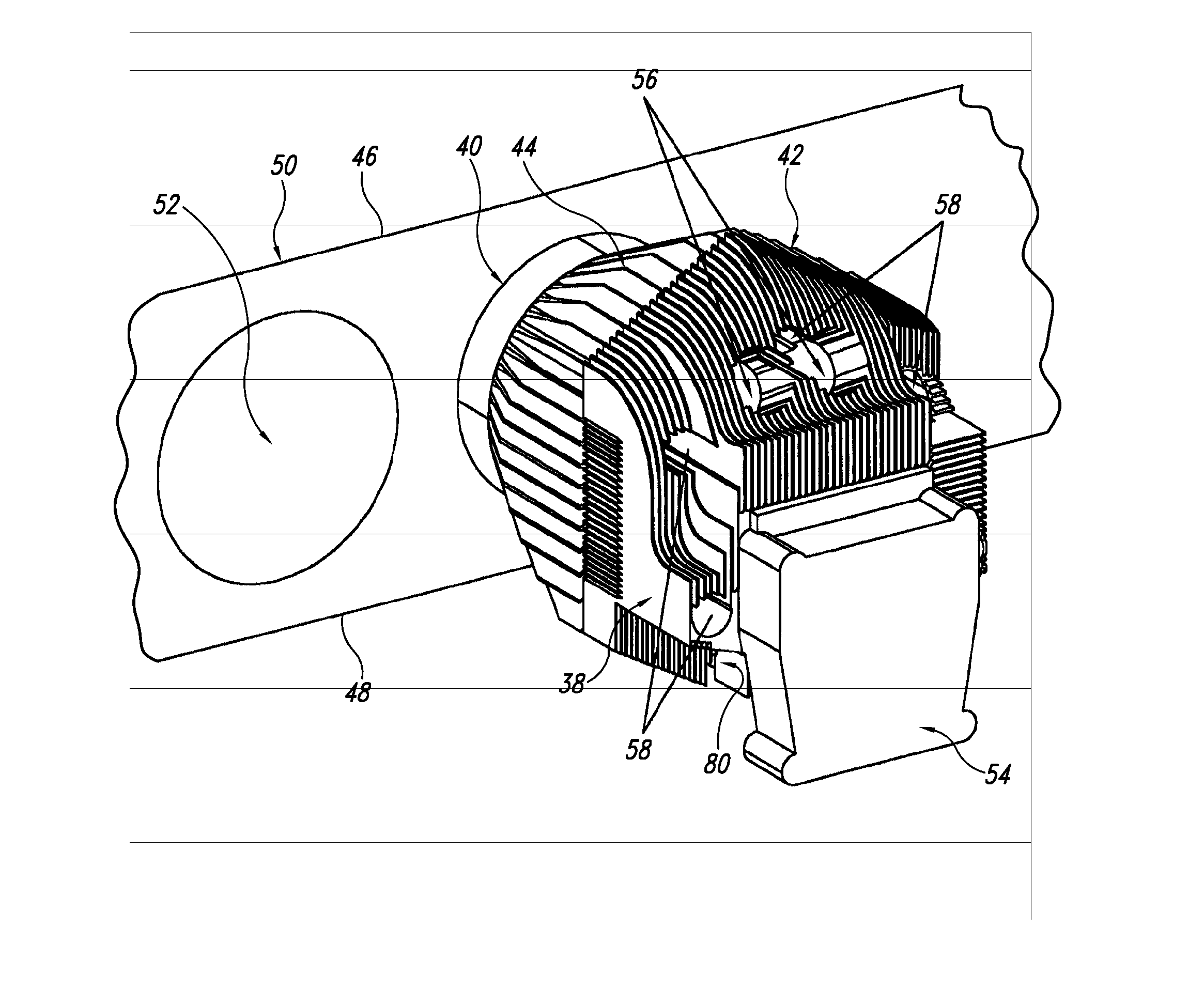Axial flow cooling for air-cooled engines
a technology of air-cooled engines and fins, which is applied in the direction of engine cooling apparatus, air cooling, cylinders, etc., can solve the problems of increasing pressure, reducing the useful power output of the engine, and the net efficiency of the engine, and orientating the fins perpendicular to the longitudinal axis of the cylinders
- Summary
- Abstract
- Description
- Claims
- Application Information
AI Technical Summary
Benefits of technology
Problems solved by technology
Method used
Image
Examples
Embodiment Construction
[0032] Most of the problems of both updraft cooling and downdraft cooling are eliminated by a novel cooling configuration disclosed herein, henceforth referred to as axial cooling, with the flow of cooling air traveling substantially parallel to the axis of the cylinder. Fins on the cylinder and head are oriented so they are substantially parallel to the axis of the cylinder. Cooling air is injected into the fin structure near the rocker arms. From there it flows over the head fins, then over the cylinder fins toward the crankcase. Ducts contain the air within the fin structures. The ducts may terminate some distance from the crankcase, allowing the warmed air to escape. Better, the ducts may guide the warmed air toward the cooling air outlet, where it may be accelerated out of the engine compartment using exhaust augmentation. It is not necessary for the fins on the head to be aligned with the fins on the cylinder. In fact, it is undesirable for the two sets of fins to be aligned. ...
PUM
 Login to View More
Login to View More Abstract
Description
Claims
Application Information
 Login to View More
Login to View More - R&D
- Intellectual Property
- Life Sciences
- Materials
- Tech Scout
- Unparalleled Data Quality
- Higher Quality Content
- 60% Fewer Hallucinations
Browse by: Latest US Patents, China's latest patents, Technical Efficacy Thesaurus, Application Domain, Technology Topic, Popular Technical Reports.
© 2025 PatSnap. All rights reserved.Legal|Privacy policy|Modern Slavery Act Transparency Statement|Sitemap|About US| Contact US: help@patsnap.com



